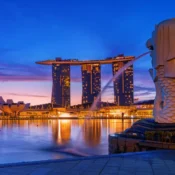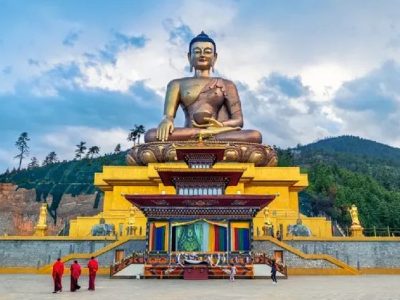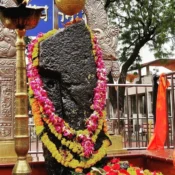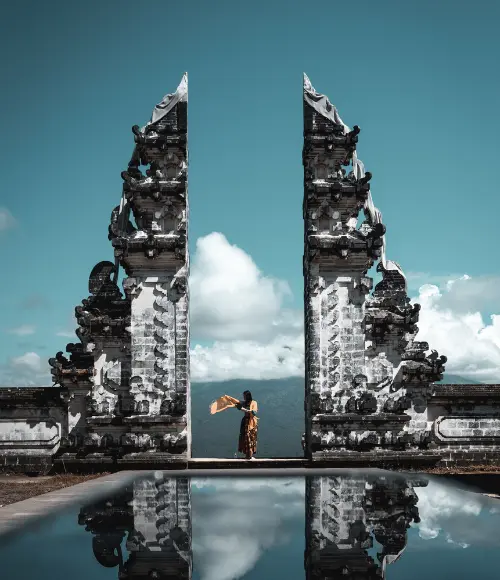Uncovering the History and Mysteries of Puri Jagannath Temple
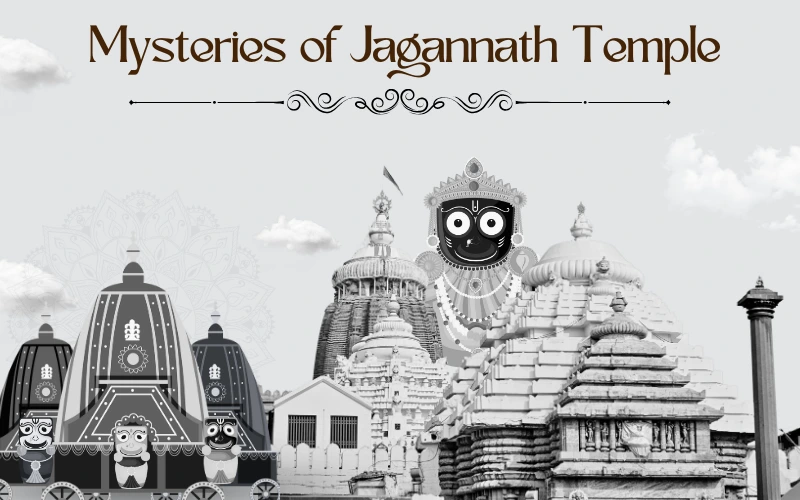
Uncovering the History and Mysteries of Puri Jagannath Temple
The Puri Jagannath Temple stands firm as one of India’s most remarkable and revered pilgrimage sites, filled with history, devotion, and intrigue. This ancient temple, which is devoted to Lord Jagannath and is situated in the seaside city of Puri, Odisha, is a source of spiritual significance as well as a wealth of secrets and legends that have captivated both pilgrims and historians. The temple has many mysteries that cannot be explained by science, from its 12th-century beginnings to the unique rites carried out inside its sanctified walls. Delving into the history and mysteries of the Puri Jagannath Temple offers a perspective into the world that was before us, a world filled with architectural marvels and science beyond modern comprehension.
Historical Background of the Puri Jagannath Temple
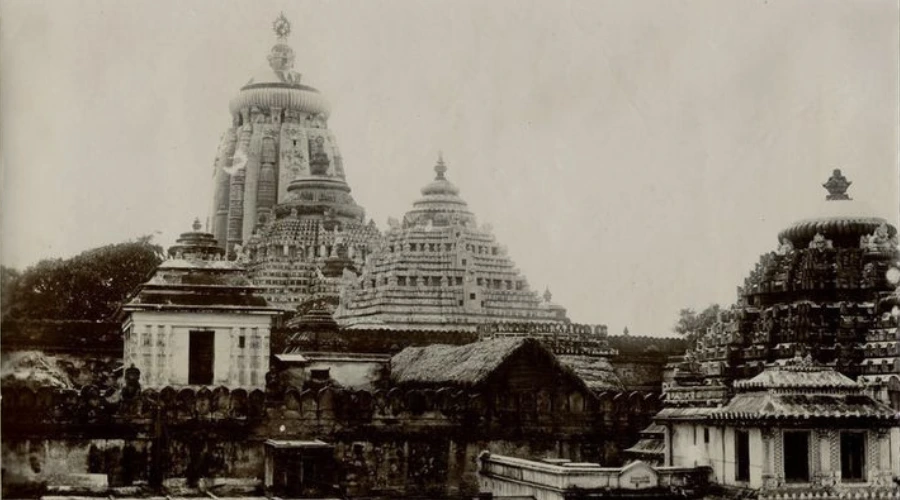
Legend has it that Lord Jagannath was primarily worshipped as Neela Madhava (Deity made of Sapphire) in a forest by some herdsmen headed by Vishwavasu. King Indradhyumna was stubborn and hell-bent on meeting the lord face to face and set out on a journey to find the lord. When he heard rumors of the lord being worshipped in this particular forest, he dispatched his priest Vidyapati to find out the location. Vidyapati fell in love with Vishwavasu’s daughter and married her.
With the daughter’s pleas, the king agreed to take Vidyapati to the site of worship on the condition that he be blindfolded. But Vidyapati tricked both of them by dropping mustard seeds leaving a trail for the king. Upon hearing about the location, the king decided to head to the place, only to find out that the deity had left. Narada Muni appeared before him and guided him to construct a temple in Nilasala or the Blue Mountain, but the temple caved in, due to Brahma’s prolonged meditation.
Indradyumna was then instructed by Narada Muni, to construct idols from a wooden log floating on the seashore. He erected a remarkable temple, enshrined with idols of Lord Jagannath, Balabhadra, and Subhadra, standing as a symbol of perseverance through setbacks.
Mysteries of the Puri Jagannath Temple:
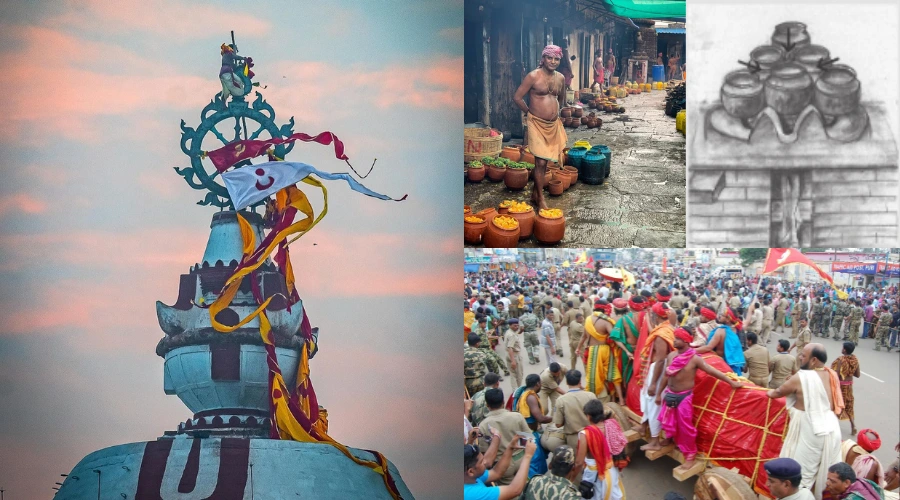
1. The Mystery of the Flag:
The behavior of the temple’s flag is among its most fascinating features. To replace the flag, a priest ascends the almost 214-foot-tall temple dome each day regardless of the weather, and has been a regular routine for decades. Despite the laws of nature, the flag mysteriously always flutters in the opposite direction of the wind. Both locals and tourists consider this phenomenon a divine act representing Lord Jagannath’s omnipresence and omnipotence.
2. The Enigma of the Sudarshanchakra:
The enormous Sudarshan Chakra, a disc-shaped monument representing protection, is located at the top of the temple. Engineers and tourists find it puzzling that the Sudarshan Chakra always seems to be facing the observer, regardless of where they are in Puri. This optical illusion is believed to be a heavenly design because it cannot be explained by engineering. The temple and the town of Puri itself are thought to be protected by the chakra, which has its own legend.
3. The No-Fly Zone
No birds or planes fly directly over the Puri Jagannath Temple, which is rare for a monument of its kind. Unbelievably, the airspace over the temple is still clear despite the absence of any obvious obstacles. Although the precise cause is unknown, many people think that the temple’s surrounding spiritual or heavenly energy is the cause. This phenomenon is still a mystery because no scientific proof has been found to support the theory that it is related to magnetic fields.
4. The Mahaprasad Mysteries
The temple is especially well-known for its Mahaprasad, a holy dish prepared in earthen pots according to custom. The most unusual feature of this offering is that there is always enough Mahaprasad prepared, regardless of how many devotees visit the temple. Devotees consider this to be a divine arrangement because there is never a scarcity or surplus. Furthermore, the method entails placing clay pots in a pyramidal arrangement on the burner, with each pot boiling concurrently. Unbelievably, the food in the pot at the top cooks first, going against the fundamentals of cooking.
5. The sound at Singhadwara:
There is an aural enigma associated with the Singhadwara (Lion Gate), the temple’s main entrance. Standing at the gate, one can clearly hear the adjacent sea’s waves. But the sound of the waves nearly completely stops when you pass through the gate. This unexplainable reversal effect heightens the temple’s ethereal ambiance. According to some, this symbolizes the calm ambiance of the temple, where outside disturbances vanish as soon as one steps upon the hallowed grounds.
6. The Ritual of the Changing Idol
The Navakalevara, or the ceremony of changing the wooden idols of the deities, is one of the most respected customs in the Puri Jagannath Temple. According to old customs, a sacred neem tree is chosen from a hidden area for this ceremony, which takes place every 12 to 19 years. The idols are buried inside the temple grounds in a ceremony called Brahma Parivartan, or the transfer of divine essence, and the procedure is conducted in complete secrecy. The ceremony is still a well-guarded secret because it is customary for individuals who observe the transfer to die within a year.
The Ratha Yatra in Puri Jagannath:
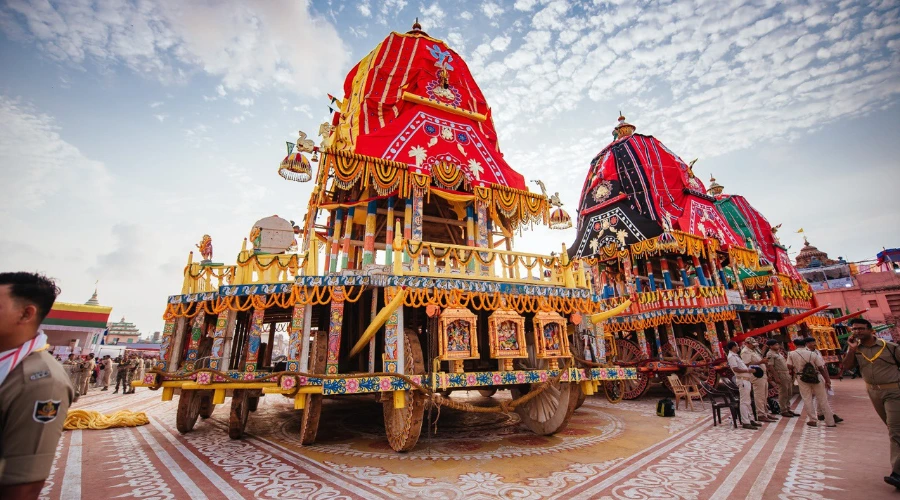
The Ratha Yatra also called the Chariot festival, held at the Puri Jagannath temple, is considered one of India’s grandest and most revered religious events. The Jagannath Puri Rath Yatra is a vibrant festival held annually, with Lord Jagannath, Balabhadra, and Subhadra, are ceremoniously placed on a huge ornately decorated chariot and drawn through the streets by thousands of devotees, representing Lord Jagannath’s visit to his birthplace, the Gundicha Temple. This festival with its vibrance and rich colors, and music, draws millions from across the world, uniting them in devotion gracefully.
Conclusion:
The Puri Jagannath Temple, which has withstood innumerable invasions over the ages without compromising its devotion, is a monument to India’s rich spiritual legacy and the tenacity of its people. The temple has maintained its mysterious aura and hallowed traditions despite numerous attempts to subjugate or destroy its holiness, luring millions of visitors who want to experience its wonders for themselves. Our Puri Jagannath Tour Package promises an unforgettable exploration into the temple’s divine allure and enduring legacy.


